News
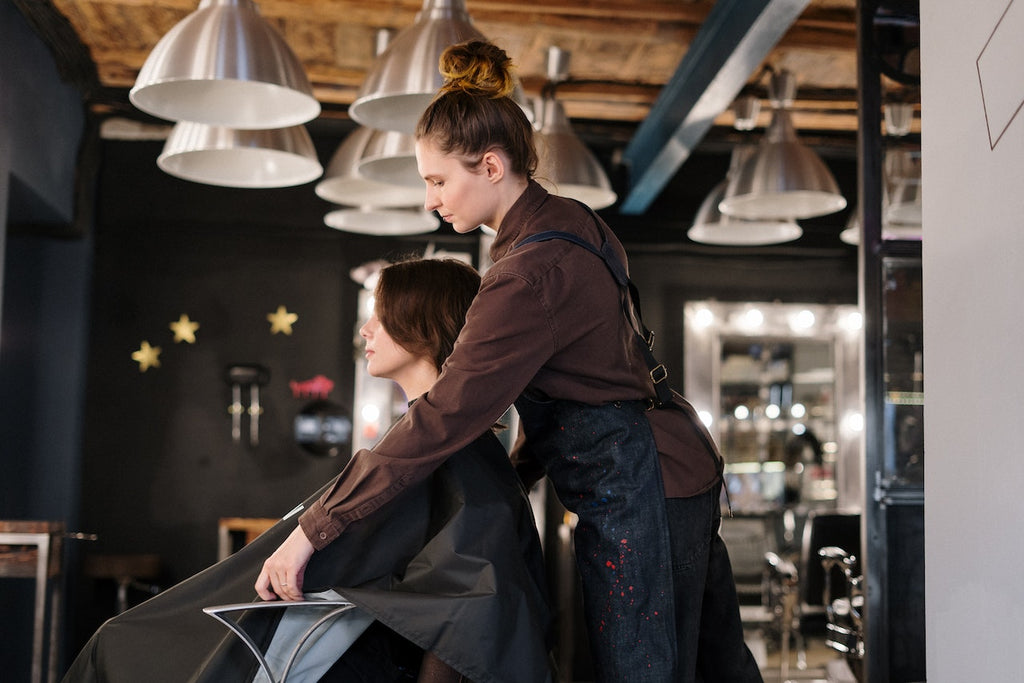
Choosing the Right Hair Transplant Procedure for You
Are you suffering from hair loss? If so, you're not alone. Millions of people worldwide experience hair loss, and it can be difficult and emotionally devastating to deal with. If you're considering getting a hair transplant, a few things must be considered to ensure that you choose the right procedure for you.
With so many different hair transplant procedures available, it can take time to know which is the best for you. In this article, we'll take a quick look at the different types of hair transplant procedures and help you choose the one that's best for you:
FUT or Follicular Unit Transplantation
FUT is the most common type of hair transplant procedure. It involves transplanting individual follicular units (the natural grouping of 1-4 hairs) from the donor area to the recipient area.
FUE or Follicular Unit Extraction
FUE is a newer hair transplant technique that is growing in popularity. Unlike FUT, which involves removing a strip of tissue from the donor area, FUE involves individually extracting follicular units from the donor area.
SUT or Strip Harvesting
SUT is a variation of the FUT hair transplant procedure. Instead of transplanting individual follicular units, SUT transplants a tissue strip containing many follicular units.
What You Must Consider When Choosing the Right Hair Transplant Procedure for You
When it comes to hair transplants, many factors need consideration to ensure that you choose the right procedure for you. Here are some things to keep in mind:
Hair Type
There are different types of hair transplants, and each one is better suited to different kinds of hair. If you have fine hair, consider a follicular unit extraction (FUE) transplant, as this can be more effective in transplanting finer hairs. On the other hand, if you have thicker hair, however, you may want to consider a follicular unit transplant (FUT), as this can be better at transplanting larger grafts of hair.
Hair Thickness
Another factor to consider is your hair's thickness. If you have thinner hair, consider an FUE transplant, as this can be more effective in transplanting finer hairs. On the other hand, if you have thicker hair, consider a FUT transplant, as this can be better at transplanting larger grafts of hair.
Hair Loss Pattern
There are two main patterns of hair loss: male pattern baldness and female pattern baldness. Male pattern baldness is characterized by receding hairlines as well as thinning hair on the top of the head, while female pattern baldness shows as thinning hair all over the scalp. Depending on your hair loss pattern, your doctor will recommend a specific hair transplant procedure.
The Severity of Hair Loss
One of the biggest things you have to consider when choosing a hair transplant procedure is the severity of your hair loss. If you have mild hair loss, a less invasive procedure like Follicular Unit Extraction (FUE) may be more appropriate. However, if you have more severe hair loss, you may need a more invasive procedure like Follicular Unit Transplantation (FUT).
Budget
Of course, the cost is also an important factor to consider. FUE transplants tend to be more expensive than FUT transplants, so if cost is a concern, you may want to consider a FUT transplant. However, it is crucial to remember that the cost of a hair transplant is an investment, and you should choose the procedure that is right for you, regardless of cost.
Medical History
Medical history is among the crucial factors to consider when choosing a hair transplant procedure. This is because certain medical conditions can increase the risk of complications from surgery. For instance, if you have a history of bleeding disorders or you are currently taking blood thinners, you may be at a much higher risk for bleeding during or after the surgery.
Conclusion
There are a few different hair transplant procedures available. The right one for you will largely depend on your individual needs and preferences. Talk to a hair transplant doctor to learn more about your options and find the best procedure for your hair loss problem.
Before opting for hair transplants, it's a good idea to try hair loss products that have been proven effective, especially if your hair loss problem isn't severe.
Tugain 10 can help you with hair loss concerns. We have some of the most effective hair loss products you can get, including hair regrowth minoxidil 5%. Get your hair regrowth products from Tugain 10 today!
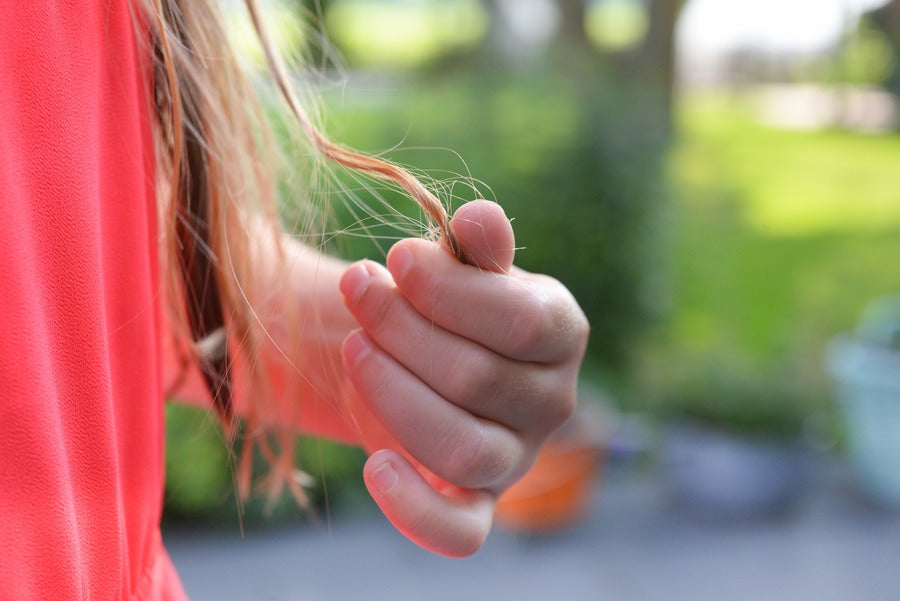
Alopecia Areata—What It Is, How It Looks, and How to Treat It
If you've looked around at the news recently, you may have heard something called alopecia areata, but what does it mean? Well, the term "alopecia" is a broad term used to refer to all types of hair loss, and as you know, hair loss is a common issue that many people face during their lifetimes. That said, alopecia areata is an autoimmune condition that causes hair loss on the scalp and other parts of the body, mainly due to the body's own immune system attacking air follicles.
What Are the Causes of Alopecia Areata?
While the exact cause of alopecia areata is still unknown, some factors are thought to play a role in the development of the condition.
One of the main causes of alopecia areata is believed to be a genetic predisposition. This means that the condition may be passed down from generation to generation. In addition, those with a family history of alopecia areata are more likely to develop the condition themselves.
Environmental factors may also contribute to the development of alopecia areata. Exposure to certain chemicals, pollutants, and other toxins may increase the risk of developing the condition. In addition, viruses and bacteria may trigger the immune system to attack the hair follicles, leading to hair loss.
Stress is another possible cause of alopecia areata. Stress can cause the body's immune system to become overactive and attack the hair follicles. This can lead to hair loss in those who are already predisposed to the condition.
Finally, there is evidence to suggest that certain medical conditions may be linked to alopecia areata. These include thyroid disorders, such as hypothyroidism and hyperthyroidism, as well as lupus, rheumatoid arthritis, and diabetes.
How Can You Tell If You Have Alopecia Areata?
The most visible symptom of alopecia areata is patchy hair loss on the scalp, face, or other parts of the body. The patches of hair loss can range in size from a few millimeters to several centimeters in diameter. In some cases, hair will regrow on its own after a few months, but in other cases, it may require treatment.
In addition to patchy hair loss, other symptoms of alopecia areata can include itching, burning, or tingling in the affected area. Some people may also experience a feeling of tightness in the scalp or the presence of small bumps.
How Is Alopecia Areata Treated?
The first line of treatment for alopecia areata is often topical medications. These medications are usually corticosteroids, which are designed to suppress the immune system's activity and reduce inflammation in the scalp. A topical corticosteroid cream or ointment is usually applied directly to the affected area twice daily. Topical medications can be quite effective at slowing the progression of hair loss and often help regrow some of the lost hair.
Another option for treating alopecia areata is intralesional corticosteroids, which are injected directly into the affected area. These injections are usually given every 4-6 weeks and can help reduce inflammation and encourage hair regrowth.
In addition to topical medications and injections, some people may also benefit from light therapy. This type of therapy involves exposing the scalp to bright light in order to stimulate the hair follicles and encourage hair regrowth. Light therapy is usually done in a dermatologist's office and may be combined with other treatments.
Finally, some people may also benefit from taking oral medications to help slow the progression of alopecia areata. These medications may include corticosteroids, antimalarials, and immunosuppressants. While these medications can be effective, they can also have serious side effects, so they should only be taken under a doctor's supervision.
Conclusion
Alopecia areata is a frustrating condition, but with the right treatment, it is possible to slow the progression of hair loss and even regrow some of the lost hair. If you are experiencing hair loss due to alopecia areata, it is important to speak to your doctor about the best treatment options for you!
Tugain 10 offers hair regrowth products to help men gain full and healthy hair that they can be proud of. If you're looking for 10-percent minoxidil to help deal with hair loss, check out our product!
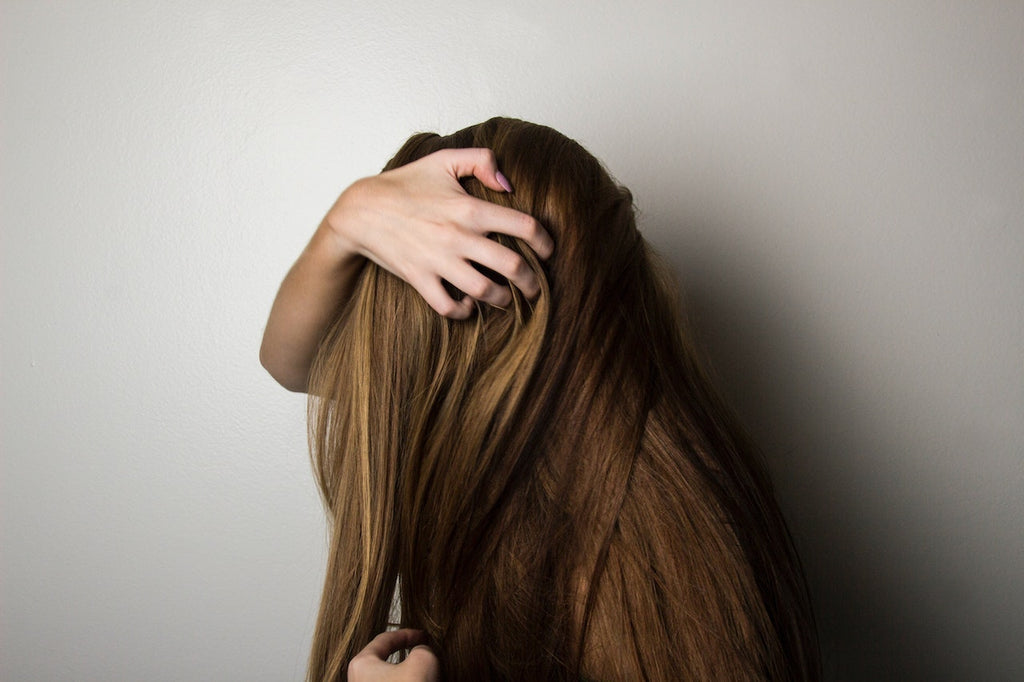
Medicine Spotlight: All You Need to Know About Minoxidil
Most people have heard the saying, "your hair is your crowning glory," which is true because our hair is a fundamental part of our appearance. Conversely, we can also express ourselves depending on how we style it, which is why many people take care of their hair. However, one can only do so much because the possibility of hair loss to occur is highly likely.
Many factors can contribute to hair loss, whether genetics, medications, or an underlying medical condition. Luckily, there are many ways to combat hair loss, such as Minoxidil. Minoxidil is a medication used to treat hair loss and baldness in both men and women. It is available in topical solutions, foam, and shampoo, making it highly effective because it's non-invasive, unlike a hair transplant. However, many people who suffer from hair loss often refuse it because they don't understand it. For this reason, we'll discuss the details in this article.
What Is Minoxidil?
Minoxidil, also sold under the brand name Rogaine, is a topical solution used to treat hair loss and baldness. Its active ingredient is minoxidil sulfate, which is a vasodilator. A vasodilator is a drug that dilates your blood vessels, thus improving your blood circulation and lowering your blood pressure.
Minoxidil was initially created to treat high blood pressure. However, people who used it noticed that their hair started to grow back. After further analysis, it was discovered that minoxidil sulfate dilated the blood vessels around the hair follicles, thus increasing the flow of blood and nutrients to the hair follicles.
How Effective Is It?
Minoxidil is a popular hair loss treatment because it is effective for both men and women. It's available without a prescription, and it is relatively inexpensive.
Minoxidil is most effective in the early stages of hair loss and is available in solution and foam form. The solution is applied to the scalp with a dropper, and the foam is applied with your fingers. Minoxidil is usually used twice a day.
You will probably see results after four months of using minoxidil. However, it may take up to a year to see the full effects of minoxidil.
How Much Should You Take?
The recommended dosage for Minoxidil foam is a 0.5 capful twice daily, to be applied to the affected areas of the scalp. If there's no improvement after 16 weeks, discontinue usage. For the solution variant, apply 1 mL twice daily to the affected areas of the scalp. If there's no improvement after 12 months, discontinue usage.
Additionally, you must have a 12-hour interval between each dosage. The dosage must also be the same if you’re using the 2% formula of Minoxidil.
Can You Take It Weekly?
You may have heard of people taking Minoxidil once a week because it’s more convenient than applying it twice daily. Some even say it's fine to take it thrice a week.
We cannot stress enough that the medication is designed to be applied twice daily, and changing the dosage is not recommended. Therefore, you can't take Minoxidil thrice a week. It may take longer to see results, and there's also a chance of nothing happening if you take it sparingly.
Are There Side Effects?
While Minoxidil is highly effective against hair loss, it's not without faults because there are several side effects associated with it, such as:
- Irritation
- Rashes
- Allergic Dermatitis
- Hair Shedding
- Changes in Hair Color
The severity of these side effects depends on each person, but they're typically minimal and will go away after a few days.
Consulting a Dermatologist
Minoxidil may be highly effective, but you should still consult a dermatologist to discuss your treatment options. A dermatologist can help you determine the best course of action to ensure that your hair loss is appropriately treated, and they can also help you manage the side effects you may experience.
Conclusion
Minoxidil is an effective hair loss treatment because it can increase blood flow and widen the hair follicles, delivering more nutrients for hair growth. However, you should know it's not for everyone, so you must consult a dermatologist first. You'll be on your way to having healthy hair when you do.
If you’re looking for hair growth Minoxidil, Tugain 10 has what you need! We offer Minoxidil medications in different formulations, all for affordable prices. Visit our website today and take your pick!

Using Minoxidil on Your Beard for Much Better Results
The effectiveness of taking minoxidil to remove facial hair needs to be better supported by research. In Bangkok, Thailand's Mae Fah Luang University Hospital, a group of researchers from the dermatology department and the school of anti-aging and regenerative medicine examined and surveyed the usage of minoxidil on the face. They were trying to determine to what extent minoxidil can safely promote beard hair growth.
They presented their findings in a letter to the editor of the Dermatology journal of the Japanese Dermatological Association. The letter was titled "Efficacy and safety of minoxidil 3% lotion for beard enhancement: A randomized, double-masked, placebo-controlled study."
The research team concluded that using a lotion containing only 3% minoxidil is secure and efficient for promoting beard hair growth. The thing is, minoxidil is helpful for speeding beard development when compared to a placebo and has minimal negative effects.
It is also excellent for enhancing eyebrow hair, according to a different study on "Minoxidil 2% lotion for eyebrow enhancement" in addition to scalp hair. Hair on the beard and eyebrows, however, differs. To further clarify, the safe and effective concentration of topical minoxidil lotion for the development of eyebrow hair is 2%.
How Long Would It Take To See a Fuller Beard?
There is no set timeframe during which you will notice or enjoy fuller beard development. You must exercise patience as the hair-growth process takes time. Within four to six months, your beard can start to grow. A year may also be added to this time frame.
A larger beard may develop within 2 to 7 years if minoxidil is used consistently and regularly.
Things to Remember before Using Minoxidil for Beard Growth
Many guys are now using minoxidil to grow their beards. So, in recent years, its demand has dramatically increased. The following considerations should be made, though, before taking it:
1. It Is Not Approved to Be Used on the Face
FDA approval for application to the face to promote beard growth is still pending. Only the vertex, a particular area of the scalp at the top of the head, has undergone testing and received approval for treatment of hair loss. Men who are experiencing hair loss or baldness should use a solution of minoxidil that is only 2 to 5 percent.
2. It Is Effective If Used as Prescribed
If used as directed, minoxidil can promote beard growth, but it only works while you're indeed following prescriptions consistently. Your hair recovers to its previous state after you stop using it. It would stop stimulating hair growth while being used, and any hair that did grow might fall off.
3. It Harbors a Certain Insight from Johnson & Johnson
In 2000, Johnson & Johnson purchased Rogaine. They were contacted by a group from the Arocha Hair Restoration & Transplant Center to get their opinion on using minoxidil on the face. They claim that the face shouldn't be treated with this medication. For the purpose of reducing hair loss, their guidance restricts the application to the vertex of the scalp.
Conclusion
Applying minoxidil to the face to promote beard growth has not been shown or disproven by any compelling evidence. Only one study, and that too with a 3% solution, suggested that it might indeed improve beard hair.
That said, before utilizing minoxidil for your beard growth, you must consult your dermatologist for exact instructions on its application.
If you are looking to buy minoxidil online, look no further than our amazing selections here at Tugain 10. We offer a wide range of products that are sure to bring out the shine and growth of your facial hair. Check out our online shop for more of our minoxidil selections and our other beard care items.

Top Minoxidil Application Mistakes That Can Cause Baldness
Minoxidil is a treatment that is used to treat hair loss. It is convenient in a topical solution and a cream and is applied to the scalp twice daily. Minoxidil can effectively treat hair loss, but it is vital to use it correctly to avoid causing further hair loss.
Here are the top 11 minoxidil application mistakes that can cause baldness:
1. Applying Minoxidil to Wet Hair
Minoxidil should be applied to dry hair, as wet hair can make it more difficult for the medication to be absorbed by the scalp. If you must apply minoxidil to wet hair, make sure to dry your hair thoroughly before applying for the medicine.
2. Applying Minoxidil to Dirty Hair
Dirty hair can also make it more difficult for minoxidil to be absorbed by the scalp. Make sure to wash your hair before applying minoxidil, and avoid using the medication on any areas of the scalp that are covered in dirt or oil.
3. Applying Minoxidil to the Scalp More than Twice a Day
Applying minoxidil more than twice a day is unnecessary and can be harmful. Using minoxidil more than twice a day can cause scalp irritation and may increase the risk of side effects such as scalp redness, itching, and flaking.
4. Applying Minoxidil to the Wrong Area of the Scalp
Minoxidil should be applied to the scalp where hair loss is occurring. Using minoxidil on the wrong area of the scalp, such as the forehead or temples, will not be effective in treating hair loss and may cause hair loss in those areas.
5. Applying Minoxidil to Broken or Irritated Skin
Do not apply minoxidil to broken or irritated skin. Using minoxidil on broken or irritated skin can cause further irritation and may increase the risk of side effects.
6. Rubbing Minoxidil into the Scalp
Minoxidil should be applied to the scalp in a gentle, massaging motion. Rubbing minoxidil into the scalp can irritate the skin and increase the risk of side effects.
7. Applying Minoxidil to Sweaty Hair
Minoxidil should be applied to dry hair. The medication won’t be absorbed if your hair is sweaty. So make sure to use it to dry hair, or at least wait for your hair to dry before applying minoxidil.
8. Stopping Minoxidil Use Too Soon
Minoxidil takes time to work. If you stop using it before you see results, you will not see any results.
9. Not Using Minoxidil Consistently
If you want minoxidil to work, you need to use it consistently. That means using it every day without skipping any days. You’re not allowing the medication to work if you miss even a day.
10. Applying Minoxidil to Dandruff-Covered Hair
Minoxidil should be applied to a clean scalp. The medication won't be absorbed if your scalp is covered in dandruff. So, wash your scalp with a dandruff shampoo before applying minoxidil.
11. Not Applying It Correctly
One of the most prevalent mistakes people make when using minoxidil is not applying it correctly. The medication can't work properly when you don’t apply minoxidil evenly or don’t use enough of it. As a result, you may not recognize the hair growth you’re hoping for.
To ensure you’re using minoxidil correctly, be sure to:
- Apply the medication to dry hair
- Use the correct amount (usually 2 mL)
- Apply it evenly to the affected areas
If you’re unsure how to apply minoxidil correctly, talk to your doctor or pharmacist. They can show you how to use the medication properly.
Conclusion
It is vital to be conscious of the top minoxidil application mistakes that can cause baldness. Applying minoxidil too often can result in scalp irritation and dryness, leading to hair loss. In addition, minoxidil products not intended for use on the scalp can also cause scalp irritation and dryness, leading to hair loss. Using minoxidil products not designed on the scalp can also cause scalp irritation and dryness, which can lead to hair loss.
If you're looking for a trusted and effective minoxidil product for hair loss, look no further than Tugain 10. Tugain 10 is a topical solution clinically proven to help regrow hair and is sufficient for both men and women. Contact us today to learn more about how our products can help you achieve your desired results.
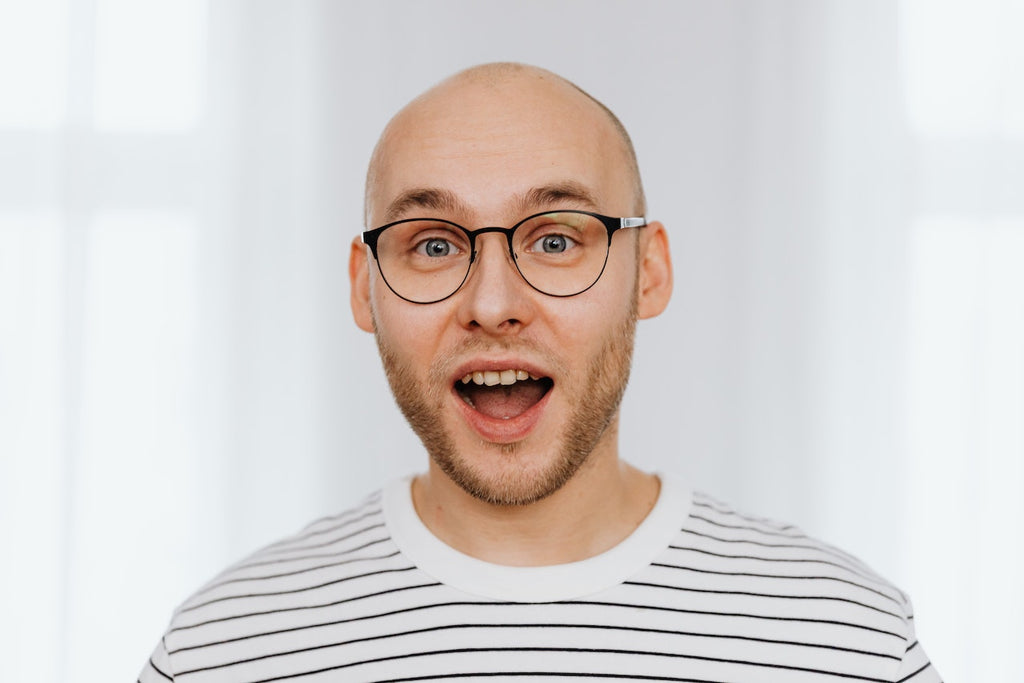
The Telltale Signs of Baldness You Should Not Ignore
Julius Caesar was one of the most brilliant military strategists. He was also known for using the laurel wreath to cover his baldness. Roman generals often wore the garland as a symbol of victory. Caesar was a master of propaganda and used the wreath to create the impression that he was a great military leader.
In ancient Rome, as highlighted by Julius Caesar, laurel wreaths were often worn by victorious generals as a symbol of their triumph. In modern times, however, it would be considered strange for a man to wear a laurel wreath to hide his baldness.
With advances in technology, you can treat your baldness as soon as you notice hair loss. Several treatments are available, so you can choose the remedy that best suits your needs.
How Do You Become Bald?
Although male pattern baldness is not a medical condition that you will suddenly wake up with one morning, it can be a significant source of anxiety for many men. If you notice your hairline receding or thinning out, it is necessary to understand what is causing it and what you can do to reverse it.
A combination of genetic and hormonal factors causes male pattern baldness. Androgenetic alopecia, the medical term for male pattern baldness, is an inherited condition affecting both men and women. However, it is much more common in men and often begins in puberty.
Testosterone, the primary male hormone, plays a role in hair loss. When testosterone levels are too high, they can signal the hair follicles to stop growing. It can eventually lead to hair thinning and baldness.
Several treatments are available for male pattern baldness, including medication, surgery, and lifestyle changes. If you are concerned about going bald, talk to your doctor about your options.
Hair Loss
Hair fall is one of those things that is surprisingly easy to overlook. After all, it is not like you can see it happening. But if you are shedding more hair than usual, it is worth paying attention to.
There are several possible causes of hair loss, from stress to nutritional deficiencies. So if you are concerned about going bald, you must see a doctor to rule out any underlying health conditions.
In the meantime, you can do a few things to help prevent hair fall. First, ensure you are using a gentle, sulfate-free shampoo and conditioner. Avoid using hot tools like hair dryers and curling irons, and give your hair a break from tight styles like braids and ponytails. And last but not least, try to reduce stress in your life.
Receding Hairline
A receding hairline is a classic sign of male pattern baldness. This condition, also known as androgenetic alopecia, affects millions of men worldwide. While a receding hairline is most commonly seen in older men, it can occur at any age.
There are several causes of a receding hairline, but the most common is genetics. If your father or grandfather had a receding hairline, you are more likely to have one. Other causes include stress, illness, and certain medications.
While a receding hairline is not dangerous, it can be a source of anxiety and low self-esteem. If you are concerned about your receding hairline, talk to your doctor. Some treatments available can help slow down or even reverse the progression of baldness.
Conclusion
Baldness can be a very sensitive issue for many men. It can be emotionally devastating to lose one's hair, and it can be challenging to cope with the physical changes that come with it. However, there are some telltale signs of hair loss that can help you identify it early on. If you notice any of these signs, you must see a doctor to get a proper diagnosis and treatment plan.
If you have noticed any of the telltale signs of baldness, you should immediately get Tugain 10. This product contains 12.5%, which is known as an effective treatment for hair loss. So, get yours now!
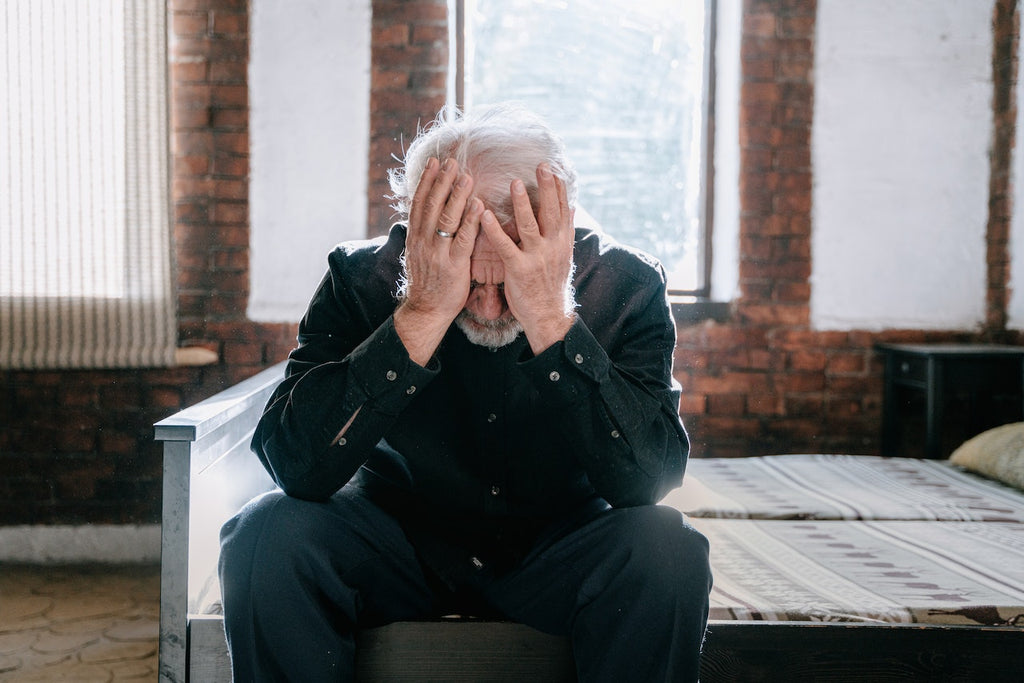
Hair Loss: Hair Thinning, Early Signs, Causes, and Treatment
The early signs of balding may be so subtle that you won't notice them until the hair loss has advanced.
The initial signs of balding are typically a receding hairline, increased hair loss, and a more noticeable scalp. There are further signs of hair loss that you might have overlooked in the past, though.
What Are the Early Signs of Balding?
There are numerous signs of hair loss or thinning. If you have any of the following symptoms, you should consider making an appointment to discuss your choices because taking action quickly is essential to stopping hair loss. The most subtle to the most obvious signs of hair loss are given here.
Your Hair No Longer Styles The Same Way It Used To
You no longer have the same styling options for your hair, which is another more noticeable symptom of hair thinning. You may be styling your hair differently to cover up the places where it is thinning if it doesn't lay as flat as it once did.
Clumps Are Forming in Your Hair
The way hair begins to fall out, especially if it does so in clumps, is another obvious sign of hair thinning. Clumps rather than strands may appear when you run your fingers through your hair. You might also notice this as you brush your hair or shower.
You Have Lighter-looking Hair
You could start to realize that your hair is no longer as heavy. This could be rather subtle. You may also notice this if your hair is pulled back, especially if you do. The ponytail could appear smaller and require more elastic band looping in addition to feeling lighter.
Your Scalp Starts to Become More Apparent
Even if you can't see any bald spots, your scalp may still be visible if you tie your hair up. You could have also noticed that your hair part has widened.
Your Forehead Is Larger
For many people, especially men, a bigger or more prominent forehead is the first sign of a receding hairline.
You Suffer from More Scalp Burns
Even while anyone can get a painful sunburn on their scalp, this burn frequently affects the visible area of their hair. However, if you see that the scalp beneath your hair is becoming burned, you may be experiencing hair thinning.
Bald Patches Can Be Seen
The clearest sign of hair loss is, of course, a conspicuous bald patch. Where you are in the hair loss process can be determined by the size of your bald area. Several regions on your body might develop bald spots.
Common Questions Regarding Hair Loss Causes
There are numerous reasons why people lose their hair. Although age and genetics are significant variables, they only provide a partial picture. Even though we could go on forever, we'd like to address a few often-asked questions about the causes of hair loss.
Is Hair Loss Associated with Stress?
Said. Although stress has different effects on different people, it does not always lead to hair loss.
According to the mayo clinic, many people report a general thinning of hair several months following a physical or mental trauma.
It also claims that sudden hair loss brought on by stress is temporary. We should also point out that persistent stress can increase the likelihood of hair loss.
How Does Vitamin D Affect Hair Loss?
A small study showed that persons with alopecia areata, an autoimmune ailment that causes patchy hair loss, had lower vitamin D levels than healthy individuals.
Though research is still in its infancy, there is mounting evidence that vitamin d deficiency and hair loss are connected, even in those without an underlying condition.
If you suspect a vitamin d deficiency is the root of your hair loss, speak with your doctor or contact us for a hair consultation.
Is All Hair Loss Permanent?
A few factors could cause temporary hair loss. As was already said, a sudden shock or stressful event may result in temporary hair loss as an emotional reaction. An underlying illness, a sudden weight fluctuation, or a bad diet can all result in temporary hair loss.
Conclusion
There are numerous ways to tell if your hair is thinning. First, pay attention to how much hair you shed when you shampoo or comb your hair. Second, look at your scalp in the mirror to see if your hair appears thinner than it used to be. Third, ask your family or friends if they have noticed any changes in your hair. Finally, consult a doctor or dermatologist if you are concerned about hair loss. Minoxidil hair regrowth can treat hair loss and promote hair growth.
The top over-the-counter remedies for hair loss may be found at Tugain 10. We provide products that successfully prevent hair loss and thinning, such as Tugain and 12.5 percent Minoxidil. Look no further if you're looking for Minoxidil hair regrowth products! Buy now online!

Guide to Taking Care of Your Hair According to Your Hair Type
Your hair plays a big role in how you look and feel. It's important to take good care of your hair so it looks healthy, shiny, and full of volume.
But how do you know which products are best for your specific hair type? This guide will help you navigate the world of hair care products so that you can find the perfect ones for your locks.
Knowing Your Hair Type
Before you can take care of your hair, you need to know your hair type. Our hair grows differently based on our genetic makeup, and it's important to know what your hair is like so that you can choose the best products for it.
There are many different types of hair, but here are some common ones:
1. Straight Hair
This hair type is smooth and easy to manage. It has a natural shine and doesn't curl when you blow dry or heat style it. This hair type tends to get oily easily, so you may need to wash your hair more often. You can use a dry shampoo for oily roots to avoid overwashing.
2. Wavy Hair
This hair type has a natural wave that can range from very loose to tightly curled. There are three types of wavy hair, and these are:
- 2A hair will be straight from roots to around eye level, then wavy down the length of the tresses. It is best not to use heavy styling products on fine and loose waves like these so they do not weigh down their natural movement.
- 2B hair usually looks like an 'S' waves. It is medium-thick consistency and will become more prone to frizz if not treated properly. Use a lightweight oil to tame the frizz.
- 2C the 'S' wave for this hair is consistent from roots to tip. Use a wide-tooth comb to avoid damage and to keep your hair looking healthy.
3. Curly Hair
Curly hair requires special attention. It's not like straight hair, where all you have to do is brush it and leave it alone. Curly hair requires regular washing and styling, or else it'll get frizzy and tangled.
If you're wondering how to take care of your curly hair, we've got you covered! Here are the best tips for caring for your curls:
- Use curl-defining cream after you wash your hair.
- Use your hands to work the cream through your hair. This will help define your curls and make them look shiny and healthy.
- Seek help from a professional. If you're unsure how to care for your curls, it's best to ask a professional. They can advise on products and techniques that will work best for your hair type and teach you how to style your hair every day.
4. Coiled Hair
The difference between curly and coiled hair is that coils are tighter and springier. This hair type is also known as afro-textured, kinky curly, or nappy hair. Coiled hair tends to be drier than other textures because it has less moisture in the cortex area.
It is important to take good care of coiled hair to prevent breakage and dryness. Use a moisturizing shampoo and conditioner.
Conclusion
Whether you have curly or straight hair, there are a lot of options out there for you. You can try different products to see what works best for your specific hair type and needs. If you need help finding the right product, ask a professional to help you. They can recommend the right products to get your hair looking its best.
Are you experiencing hair loss? Find the right product at Tugain 10 for hair growth. Bring back those lustrous locks with the right hair product.
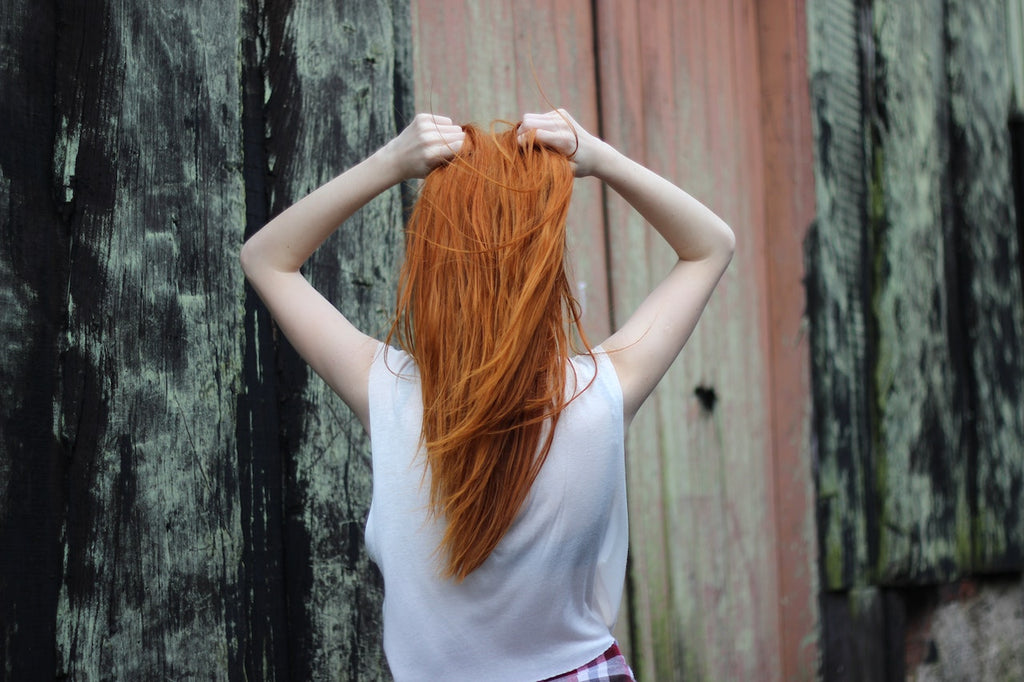
Understanding the Meaning of Hair Structure and Growth
There are numerous causes of hair loss in people. A hereditary disease, hormone problems, or simple stress can all cause hair loss. When you start losing your hair, you first want to know how to regrow it.
How quickly does hair grow, and how can you manipulate your hair's structure to hasten its development?
The sections below let you understand hair loss a little better and show some at-home and professional methods for promoting hair growth.
What Does Hair Structure Mean?
The first structure in your hair is the hair follicle, and the second is the hair shaft. You can literally see, touch, and feel the hair shaft. The medulla, cortex, and cuticle are the three components that make up the hair shaft.
Your hair's cortex, which makes up the majority of the hair shaft's structure, stores the melanin produced by your hair follicle. This is what determines the color of your hair. Your hair shaft's cuticle layer, which has close, overlapping scales, is located on the outermost portion.
What Are the Parts of the Hair Shaft?
The three main parts of the hair shaft are the medulla, cortex, and cuticle. The shaft's innermost layer is called the medulla and is composed of cells that are arranged in a spongy network.
The cortex is the middle layer of the hair shaft and is composed of cells that are arranged in a parallel fashion. And the cuticle is the hair shaft's outermost layer. It is composed of cells that are arranged in a flattened scale-like fashion.
How Long Does Hair Regrowth Take?
Your head's hair grows barely a half millimeter each day on average, which translates to around six inches of growth per year. Unfortunately, unlike other mammals, humans do not shed their hair in a seasonally predictable manner.
Anagen, catagen, and telogen are the three stages of human hair growth.
The Anagen Phase: When your hair is in the anagen phase, it grows fairly quickly. The cells in your hair follicle are dividing quickly at this stage.
In fact, between two and six years, up to 90 percent of your hair is in the anagen phase. Genetics alone determines how long your hair stays in the anagen phase.
This explains why some people can grow long hair easily while others cannot.
The Catagen Phase: This brief phase follows the anagen phase. During this stage, your hair shaft separates from the papilla to stop receiving blood supply. About two to three weeks are all that this period lasts.
The Telogen Phase: Your hair follicle needs to rest for around three months after your hair comes out. The telogen phase is the name for this.
When your hair follicle has had enough time to rest, it returns to the anagen phase, and your hair begins to regrow.
Conclusion
It's challenging, if not impossible, to extend your anagen phase because of genetics. However, a number of factors might reduce your hair shaft's lifespan or restrict its development rate.
Therefore, it's crucial to establish everyday routines that benefit your hair. Examine your options for maintaining a healthy scalp to assist in preventing hair loss.
You can rely on Tugain 10 if you want to make improvements to your hair growth! We sell 12.5% Minoxidil and Tugain 10% Liquid and Tugain Foam 10% products. Check out our hair products today!

4 Common Treatments for Hair Loss and Thinning Hair
There are many different types of alopecia or hair loss. And while it can be caused by things like allergies or treatments like radiation therapy, it can also be very upsetting for anyone. If you are experiencing hair loss on your scalp or over your entire body, there are some things you can do to slow your thinning hair and prevent hair loss.
What Causes Hair Loss?
Hair loss is a very common issue, and it doesn't discriminate. Whether you're a man or woman, young or old, you can be affected by hair loss. Several different things can cause hair loss; unfortunately, some are out of our control. Things like our age, hormones, and genetics can all play a role in hair loss, and there's nothing we can do to prevent it.
As we age, our hair follicles become weaker, and the hair produced thinner. In some cases, the hair may stop growing altogether. Scientists have successfully tackled this issue and have shown how to address ailments such as Androgenic Alopecia or Alopecia Areata.
Hair Loss Treatments
Here are four of the most common hair fall treatments:
1. Have Proper Diet
Hair follicles need Vitamin D to grow; our bodies make it from UVB sunlight exposure. But most people don't get enough sunlight, so their hair doesn't grow as well as it could. If your hair is thinning during the colder months, you may consider taking Vitamin D3 and D2 supplements. Vitamin D deficiencies can cause disruptions in sun exposure, so it is important to check your levels year-round.
2. Take Prescription Medications
Minoxidil is a medication that was originally designed to help control blood pressure. However, it was soon noted that one of the side effects of the medication was hair growth. Minoxidil is now available in prescription and over-the-counter for hair loss treatment. It is important to note that it typically takes sixteen weeks or more before people see results, and a consistent administration of the medication is required for successful hair regrowth.
There are a lot of new prescription drugs that have come out recently, but not all of them are good. You should talk to your dermatologist about any potential drug interactions with medications you're already taking or to make sure you're healthy enough to take them.
3. Get Laser Treatment
Wearable laser treatments are a new, noninvasive way to help stimulate hair growth. Laser light treatment is recognized as an effective solution to hair loss as long as there are still active hair follicles in the area being treated. This technology is becoming increasingly popular and affordable as it continues to advance.
4. Stop Stressing about Hair Loss
If you are experiencing increased hair loss, you should consider your stress levels and try to reduce them if possible. People may lose their hair due to a sudden, traumatic event like a car accident or gradual, long-term stress. To help prevent hair loss, it is important to manage stress healthily. This may involve finding ways to relax and destress, like recreation or therapy.
Conclusion
Hair loss and thinning hair can be treated with various methods, depending on the underlying cause. If the cause is genetic, treatment options are limited to medication or surgery. If the cause is due to an underlying health condition, treating the condition can often improve hair growth. Changing your hair care routine can often improve hair health if the cause is styling or environmental damage.
Tugain 10 is your source for the best over-the-counter hair loss treatment products. We provide 12.5 percent Minoxidil and Tugain, and Tugain ten percent Foam Minoxidil, among other products that are effective at combating hair loss and thinning. If you’re looking for Minoxidil products for hair growth, look no further! Shop online now!
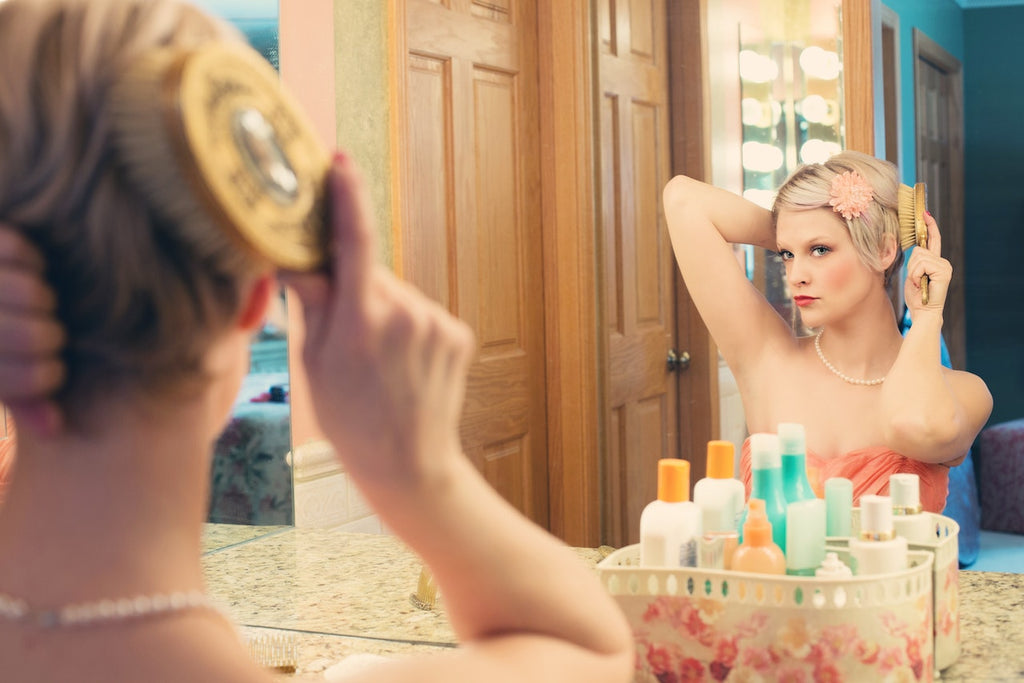
What to Know About Hair Loss and What You Can Do
Hair loss can be a very distressing experience for both men and women. It can be caused by a variety of factors, including genetics, aging, illness, or medications. There are several treatments available to help slow down or stop hair loss.
In this article, we will discuss what you need to know about hair loss and what you can do to treat it.
Common Types of Hair Loss
The most common type of hair loss is androgenetic alopecia, also known as male pattern baldness. This type of hair loss is caused by a combination of hormones and genetics. It typically affects men over the age of 50, but it can occur in younger men as well. Women can also experience hair loss, especially during and after menopause and pregnancy.
Why Does Hair Get Thinner?
There are many potential reasons why hair may get thinner over time. One common reason is aging. As we age, our hair follicles can become smaller, resulting in less hair growth. Additionally, the hair shaft may become thinner and weaker.
Other potential causes of hair loss include medical conditions, such as thyroid problems, alopecia areata, and scalp infections. Medications, such as chemotherapy drugs, beta-blockers, and antidepressants, can also cause hair loss. Lifestyle factors, such as stress, poor diet, and excessive alcohol consumption, can also lead to hair loss.
Performing a Hair Pull Test
One way to determine if your hair is getting thinner is to perform a hair pull test. To do this, take a small section of hair and lightly pull on it. If more than six hairs come out, you may be experiencing hair loss.
Hair loss can be a worrying condition, but in most cases, it is not a sign of an underlying health problem. However, if you are concerned about hair loss, it is important to see your GP, as they will be able to rule out any underlying causes. There are several different treatments available for hair loss, including medication, surgery, and lifestyle changes. If you are experiencing hair loss, it is important to speak to your GP to discuss your options.
Checking for Changes in Hair Thickness
Hair loss can lead to a decrease in hair thickness. To check for changes in hair thickness, take a small section of hair and hold it between your thumb and the first two fingers. If the hair feels thinner than it did before, you may be losing hair. Note that hair fall is fairly normal while taking a shower, especially for longer hair lengths. However, if you see a noticeable change in your hair thickness over a short period, it means that you may need to get treatment to prevent losing more hair.
Why Hair Gain Treatment May Be the Answer
If you are concerned about hair loss, you may want to consider hair gain treatment. Hair gain treatment can help to thicken your hair, and it may also help to prevent further hair loss. There are many different hair gain treatments available, and your GP can advise you on the best option for you.
Conclusion
It is not uncommon to experience hair loss as you get older. However, if you are concerned about hair loss, you may want to consider hair gain treatment. Hair gain treatment can help to thicken your hair, and it may also help to prevent further hair loss.
Should you need hair growth treatment, try Tugain 10! We offer 2.5% Minoxidil and Tugain 10% Liquid and Tugain Foam 10% products that may aid in hair growth. Shop with us today!

5 Tips on Preventing Itchy Beard While Growing Your Hair
Beard itch can be a serious problem for guys who are trying to grow their facial hair. It can be so severe that it actually discourages some men from growing a beard at all. The good news is that there are a few things you can do to reduce the itchiness and make the whole experience a lot more enjoyable.
What Causes Beard Itch?
Beard itch is caused by several different things. One of the most common is simply dry skin underneath your beard. When your skin is dry, it can become irritated and itchy. This is why it’s important to keep your skin hydrated, both by drinking plenty of water and by using a good quality moisturizer.
Another common cause of beard itch is ingrown hairs. When facial hair grows back into your skin instead of out, it can cause irritation, redness, and itchiness. This is especially common if you have coarse facial hair.
Finally, beard itch can also be caused by bacteria or fungus that gets trapped under your beard. This is why it’s important to wash your beard regularly with a good quality beard shampoo.
How to Stop Beard Itch
1. Keep Your Skin Hydrated
One of the best ways to stop beard itch is to keep your skin hydrated. When your skin is properly hydrated, it’s less likely to become dry and irritated. Drink plenty of water throughout the day, and consider using a humidifier at night. You can also apply a hydrating face serum or oil to your skin before applying your beard oil.
2. Use a Good Quality Moisturizer
Another way to stop beard itch is to use a good quality moisturizer. Look for a moisturizer that’s designed for facial hair, and that contains ingredients like shea butter, jojoba oil, or beeswax. Apply the moisturizer to your skin and beard after showering and throughout the day as needed.
3. Avoid Ingrown Hairs
One of the main causes of beard itch is ingrown hairs. When facial hair grows back into your skin instead of out, it can cause irritation, redness, and itchiness. To avoid ingrown hairs, make sure to shave in the direction of your hair growth and to exfoliate your skin regularly.
4. Wash Your Beard Regularly
Another common cause of beard itch is bacteria or fungus that gets trapped under your beard. This is why it’s important to wash your beard regularly with a good quality beard shampoo. Look for a shampoo that contains ingredients like tea tree oil or eucalyptus oil, which can help to kill bacteria and fungus.
5. Use a Good Quality Beard Shampoo
Finally, make sure you’re using a good quality beard shampoo. A good beard shampoo will cleanse your beard and skin without stripping away the natural oils. Look for a shampoo that contains natural ingredients like coconut oil or jojoba oil.
Conclusion
If you're experiencing itchiness while growing out your facial hair, there are a few things you can do to help alleviate the discomfort. First, make sure you're cleansing your face and beard regularly with a mild soap or beard shampoo. You can also try using a soft-bristled brush to help distribute oils evenly through your beard. Additionally, consider using a beard oil or balm to keep your beard hydrated and looking its best. By following these simple tips, you can help reduce itchiness and enjoy the process of growing out your facial hair.
Tugain 10 can supply you with the most effective hair growth products that will help you combat hair loss. If you need more on these products, be sure to visit our website today!

